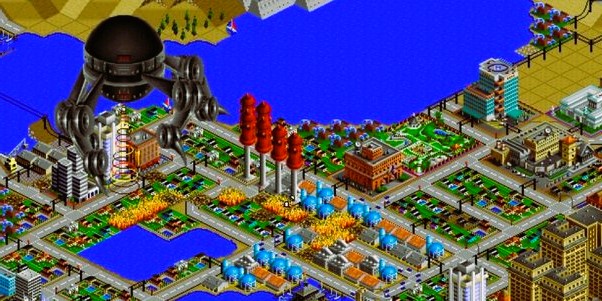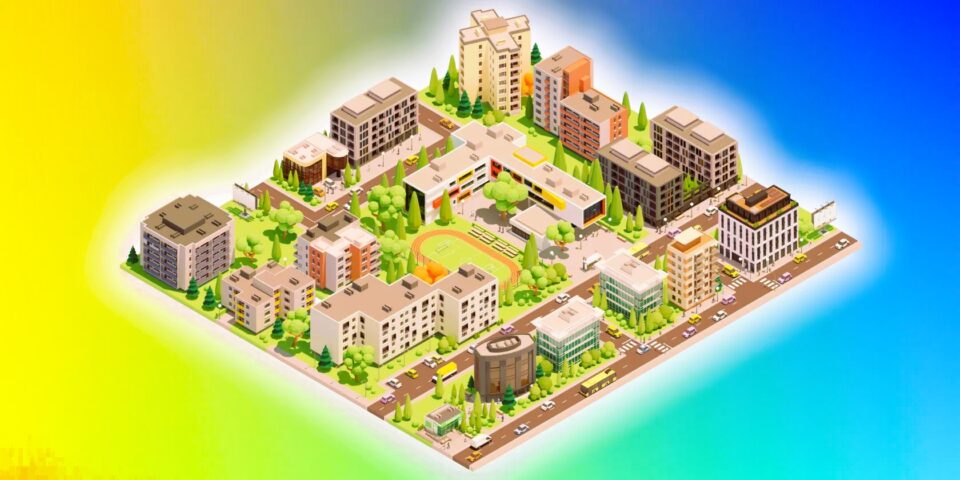SimCity, a groundbreaking urban development simulation game, has captivated the hearts and minds of gamers for decades. Since its inception in 1989, the franchise has evolved significantly, reflecting not only technological advancements but also the changing dynamics of urban planning and design. This article takes a nostalgic yet analytical look at the various iterations of SimCity that have shaped the landscape of city-building simulations over the years.
The Birth of a City: SimCity (1989)
In 1989, game designer Will Wright introduced the world to the concept of virtual city planning with the release of the original SimCity. Players were tasked with building and managing their own metropolis, facing challenges such as zoning, infrastructure development, and resource management. The game’s success was unprecedented, laying the foundation for a genre that would thrive for years to come.
SimCity (1989) was a pioneer in its own right, utilizing simple yet effective graphics and gameplay mechanics. The game’s isometric perspective provided players with a unique view of their growing city, and the introduction of a simulated economy added a layer of complexity that was both engaging and educational. The success of the first installment led to several expansions and paved the way for the evolution of the franchise.
The Renaissance: SimCity 2000 (1993)

Four years later, SimCity 2000 emerged as a sequel that not only improved upon its predecessor but also expanded the possibilities of virtual urban planning. With enhanced graphics, a more intricate simulation engine, and an increased focus on city specialization, SimCity 2000 allowed players to create even more diverse and dynamic cities.
The introduction of underground layers for utilities, the ability to build arcologies, and the inclusion of simulated events such as disasters added a new level of realism to the gameplay. These innovations were well-received by both casual players and urban planning enthusiasts, solidifying SimCity as a series that could balance entertainment with educational value.
A New Millennium: SimCity 4 (2003)
As the world entered the new millennium, so did the SimCity franchise with the release of SimCity 4 in 2003. This installment took a leap forward in terms of graphics, offering a 3D environment for the first time. The game continued to build on the concept of city specialization, allowing players to create interconnected regions with multiple cities.
SimCity 4 also introduced the concept of civic buildings and landmarks, providing players with additional tools to express their creativity. The modding community around SimCity 4 flourished, showcasing the game’s enduring popularity and the dedication of its fanbase. Read our comparative analysis of the two giants in urban modeling Skylines vs SimCity.
The Rebirth: SimCity (2013)
In 2013, SimCity received a reboot simply titled SimCity. The game promised a new level of realism with its GlassBox engine, which simulated individual agents within the city. However, the release was marred by server issues and a controversial always-online requirement, leading to a mixed reception from both critics and players.
Despite the initial challenges, SimCity (2013) brought some innovations to the table, including curved roads, a modular building system, and a more dynamic economy. The game showcased the potential for a modern and visually stunning SimCity experience, even though it faced criticism for certain design choices.
The Legacy Continues: SimCity 2024 and Beyond
In the years that followed, the SimCity franchise continued to evolve, incorporating new technologies and design philosophies. The integration of virtual reality, artificial intelligence, and advanced simulations kept the series relevant in an ever-changing gaming landscape.

As of 2024, the latest installment, SimCity 2024, has once again raised the bar for city-building simulations. With state-of-the-art graphics, a highly detailed simulation engine, and a focus on sustainable development, the game offers a comprehensive experience for both newcomers and long-time fans of the franchise.
SimCity has not only entertained millions but has also inspired a generation of urban planners and architects. Its impact goes beyond the gaming world, as the principles of city design embedded in the series have influenced real-world city planning discussions and strategies.
The SimCity franchise has come a long way since its humble beginnings in 1989. From the pixelated landscapes of the original to the immersive environments of SimCity 2024, the series has continuously adapted to the technological and cultural shifts of each era. Through its ups and downs, SimCity remains a testament to the enduring appeal of city-building simulations.
As we navigate the ever-changing landscape of virtual worlds, SimCity stands as a beacon of creativity and innovation in the realm of urban development simulations. Whether you’re a seasoned city planner or a casual gamer, the journey across the ages of SimCity is a testament to the power of simulation in shaping our understanding of the cities we live in and the cities we dream of building.
For more information on gaming and simulation standards, you can visit the International Game Developers Association (IGDA) website. IGDA plays a crucial role in setting standards and fostering collaboration within the gaming industry, ensuring the continued growth and development of groundbreaking games like SimCity.


